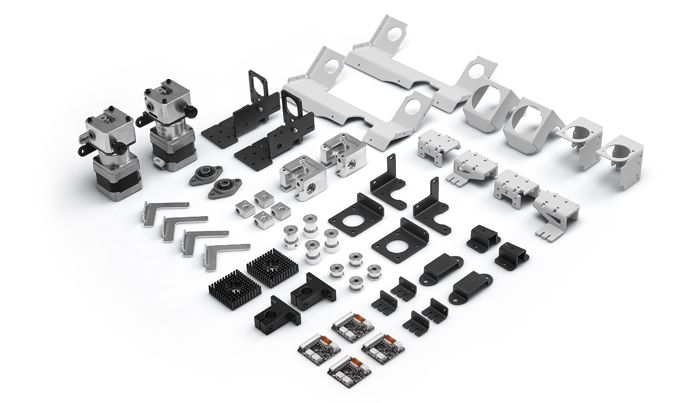
There has been a significant shift towards more eco-friendly 3D printing recently, but there is a long way to go.
As (almost) everyone knows, we’re in the midst of a climate crisis the scale of which will become apparent in coming years. Unfortunately, to counteract future effects, we need to take action now.
Everyone should do their part, and then some. Personally, I now drive only electric vehicles, for example, and have electrified almost everything in my home. There’s plenty of steps of this type individuals can take to “green” their own footprint, but what can be done in the 3D printing space by companies?
There’s a couple of dimensions to this that could be considered by a 3D print manufacturer:
- Making the production of their products eco-friendly — how much pollution is generated to make a product?
- Making the operation of their products eco-friendly — how much pollution is generated by the operator of the product?
These are two different things, but each should be considered by companies in the 3D space.
One 3D printer manufacturer has, for example, taken up an internal program to maximize recycling. BCN3D has published their waste procedures. They explain:
“In BCN3D, we are committed with the environment and we are actively work on using our resources carefully and reducing our waste. For this purpose, we use materials from local suppliers and treat our waste as a secondary material source.”
They apparently recycle almost all parts of their machines, including electronic, metal and plastic components. They also recycle more common materials such as cardboard.
BCN3D also sources their raw materials and components in an eco-friendly manner:
“We ship our products all around the world as an international company. This doesn’t mean we source the materials from the rest of the world as well. The vast majority of suppliers are located in the Barcelona area, and some of them use our waste to refabricate the components and give them a second life.”
BCN3D doesn’t mention more, but here are some additional aspects that could be considered, and I’m certain there are many more:
- Acquiring energy from renewable sources. Some larger companies have even installed their own solar systems for this purpose
- Considering the energy sources for suppliers and adjusting if necessary
- Designing machines to operate in the energy-efficient manner possible
- Designing machines to be densely packed to maximize shipping energy usage
- Including auto-shutdown features to minimize energy draw when not in use
Turning to 3D print materials, this is another huge area that has yet to be examined properly. While there are some 3D print materials made from organic ingredients, and others made from recycled materials, these are by far not the norm.
Most 3D print materials are produced using conventional processes that in many cases generate pollution. I’m not sure how this should be approached, as some materials by their very nature are polluting. Perhaps over time we’ll gradually see more eco-friendly materials products replace traditional materials.
The important thing is that companies and customers should both be more aware of pollution effects from their activities and take steps to minimize them when possible.
Via BCN3D
